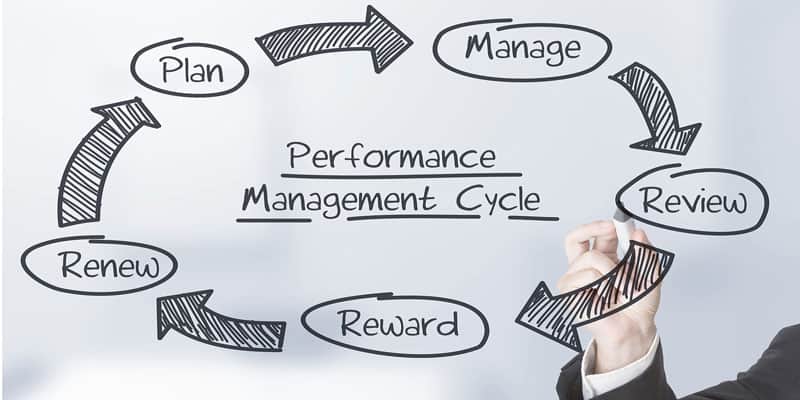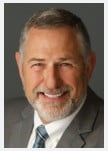Dr. Joel Small and Edwin McDonald explain an employee performance tool, AAR, that can be a vital and successful method for moving teams rapidly toward peak performance.

Drs. Joel C. Small and Edwin McDonald discuss a 5-minute way to maintain optimal functioning and flow
In a previous article in Endodontic Practice US, we addressed the topic of peak performance. We defined peak performance as “a state of optimal functioning and flow.” Like a finely tuned Swiss watch, when we operate at our peak, all parts of a clinical practice function flawlessly and in perfect harmony. Those aspiring to reach peak performance must have a vision of what peak performance looks like. This is a responsibility of the owners/doctors who must collaborate with their staff to create a vision of this desired result.
Those aspiring to reach peak performance must have a vision of what peak performance looks like.
Another effective tool for achieving peak performance is one that has been utilized by the U.S. Armed Forces and is called an “After Action Review,” or AAR. The Navy’s Sea, Air, and Land Forces (commonly known as the Navy SEALs) use the AAR as a means of fine-tuning future operations. By conducting an in-depth post-mission review, the SEALs capitalize on the positive aspects of a mission or correct the underlying causes that led to less than desirable results. Marcus Luttrell is a highly decorated Navy SEAL and American patriot, and is the author of the book Lone Survivor: The Eyewitness Account of Operation Redwing and the Lost Heroes of SEAL Team 10. Lutttrel reportedly noted that the AAR is as important as the action itself.
The coaches at Line of Sight Coaching have worked with clients to implement a shorter, yet equally as effective form of the AAR for clinical dental practices. Unlike the AAR utilized by the U.S. military, which entails extensive reporting and paperwork, the review that we have designed for dental practices should take no more than 5 minutes either at the end of the day or at the beginning of the following workday. We have found the AAR to be invaluable in moving an entire team toward peak performance. The AAR not only serves to create individual accountability for a team’s performance, but also, more importantly, shines a light on practice systems and protocols that often are hindering our ability to reach peak performance.
Clients that have implemented AARs in their clinical practices are finding that their overall team performance is optimizing at a much faster pace than they thought possible. They are also finding that the AAR has allowed them to take a holistic view of their practice by seeing more clearly the interaction of the clinical and administrative practice functions and appreciating the necessity for creating more efficient and seamless systems that improve patient flow, increase productivity, and move the entire toward peak performance.
The purpose of the AAR is to answer three questions;
- Did our day go as we had planned?
- If so, why?
- If not, why not?
The AAR starts with the team’s overall impression of the preceding workday. Did the preceding day go as planned, and what role did each individual team member play in achieving the end result? Hopefully, the day went as planned, or even better than planned, and the team can share a moment reflecting on what went right and how to duplicate this team effort to create more of these optimal days going forward. This is a moment of celebration and should not be overlooked.
If the day did not go as planned, and the overall result was less than desirable, team members must self-critique (with no fear of reprisal) and explain what they could have done differently to create the desired result. Having a psychologically safe environment is critical for this process to be effective. The doctor, as a member of the team, must set the example by willingly participating and offering his/her own self-critique. What could the doctor have done differently to make the preceding day better?
The timing and duration of the AAR is important. We have found that the AAR should take no more than 5 minutes and should occur either at the end of the workday or the beginning of the following workday. Allowing too much time to elapse before conducting an AAR has proven to be ineffective. Furthermore, anything that would require more than 5 minutes’ discussion should be tabled, placed on the agenda for the next full staff meeting, and discussed at that time. Keeping the staff longer than 5 minutes at the end of a long workday can result in the staff losing interest in the process.
It is a good idea to have a copy of the day’s schedule, so the group can reference certain patients and events that may have occurred throughout the day. The doctor should be listening to the day’s assessment while simultaneously questioning whether lack of training or resources have contributed to a less than desirable result. Often it becomes obvious that outdated systems or protocols have unknowingly hampered the team’s ability to reach peak performance. These topics are ones that need further and more in-depth discussion and should be tabled for the next full staff meeting.
There can be numerous reasons why a doctor may not see the value in an AAR. Some doctors have questioned whether they can spare 5 minutes at the end of a workday. Others feel that the staff may not willingly participate, and some may even find the vulnerability of self-critiquing to be intimidating. These thoughts are unfortunate and will only serve to promote mediocrity. The AAR has been proven to be a vital and very successful tool for teams to move rapidly toward peak performance.
If you have questions or need help implementing an AAR in your practice, we are available to help. You can contact us at info@lineofsightcoaching.com.
Joel Small discusses another employee performance tool that helps to establish practice values that serve as a vital reference point. Read “What do we value? A critical question and a values exercise,” at https://endopracticeus.com/what-do-we-value-a-critical-question-and-a-values-exercise/
Stay Relevant With Endodontic Practice US
Join our email list for CE courses and webinars, articles and more..

 Drs. Joel Small and Edwin (Mac) McDonald have a total of over 75 years of dental practice experience. Both doctors are trained and certified Executive Leadership Coaches. They have joined forces to create Line of Sight Coaching, a business dedicated to helping their fellow dentists discover a better and more enjoyable way to create and lead a highly productive clinical dental practice. Through their work, clients experience a better work/life balance, find more joy in their work, and develop a strong practice culture and brand that positively impact their bottom line. To receive their free ebook, 7 Surprising Steps to Grow Your Practice Through Leadership, go to
Drs. Joel Small and Edwin (Mac) McDonald have a total of over 75 years of dental practice experience. Both doctors are trained and certified Executive Leadership Coaches. They have joined forces to create Line of Sight Coaching, a business dedicated to helping their fellow dentists discover a better and more enjoyable way to create and lead a highly productive clinical dental practice. Through their work, clients experience a better work/life balance, find more joy in their work, and develop a strong practice culture and brand that positively impact their bottom line. To receive their free ebook, 7 Surprising Steps to Grow Your Practice Through Leadership, go to 
